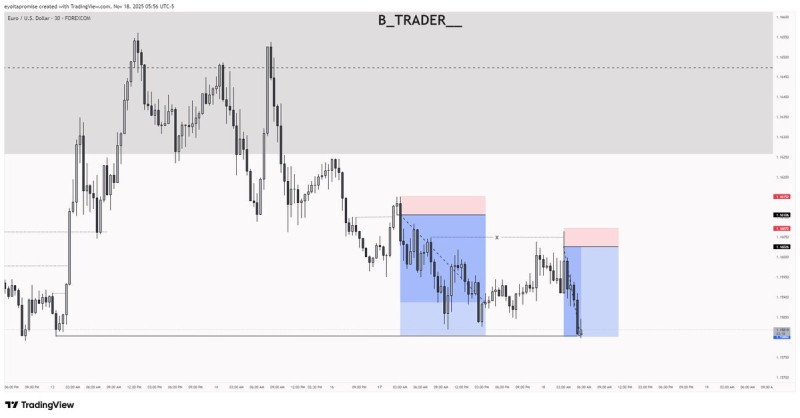EUR/USD extended its downside momentum today, delivering a textbook bearish setup that caught the attention of technical traders. The pair rejected cleanly from a key supply zone and dropped straight into a previously identified target, showing just how powerful structured price action can be. For those watching intraday charts, this move offered a clear example of how liquidity sweeps and supply blocks work together to guide price direction.
EUR/USD Hits Target Following Clean Technical Setup
EUR/USD delivered a decisive move lower after tapping a sell target following a rejection from a well-defined supply zone. The precision of this price reaction shows just how important structural analysis is when trading short-term forex moves.

Consistent directional calls come from understanding chart mechanics rather than following what everyone else is doing—and today's action backs that up.
Bearish Move From Supply Completes Target
The 30-minute chart shows a textbook sequence: price approached a previously marked intraday supply block (red), rejected cleanly, then moved down into an existing imbalance zone (blue). This pattern played out twice, showing how EUR/USD keeps responding to supply-driven order flow.
What stands out on the chart:
The higher-timeframe supply area (large grey zone at the top) is where sellers consistently took control. Red intraday supply blocks both triggered sharp moves down. Imbalance zones (blue rectangles) highlight gaps that price later filled during the decline. Before dropping, price briefly moved above a small liquidity point (marked with an "X"), sweeping stops before reversing. The downward move extended into the lower imbalance, hitting the expected target.
The symmetry between rejection points, liquidity behavior, and imbalance fills points to a strong bearish structure.
What's Supporting the Drop
Beyond intraday technicals, EUR/USD has been under mild pressure from shifting dollar sentiment and cautious positioning ahead of upcoming macro releases. These conditions often amplify technical reactions as liquidity providers adjust orders around key zones.
EUR/USD hasn't been able to sustain upward moves because prior demand zones failed to hold, lower highs keep forming on the 30-minute timeframe, and supply blocks remain respected. Together, these factors create an environment where bearish setups have better follow-through.
EUR/USD Stays Bearish on Intraday Charts
EUR/USD's clean rejection from supply and its precise move into the projected target show how effective structured technical analysis can be. The pair remains in a short-term bearish setup, and the next move will depend on how price reacts to fresh liquidity areas.
As EUR/USD keeps navigating these intraday structures, traders will be watching to see whether accumulation signs start forming—or if broader sell-side pressure continues pushing the pair into deeper liquidity.
 Usman Salis
Usman Salis

 Usman Salis
Usman Salis


